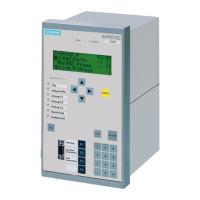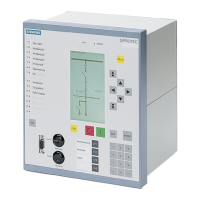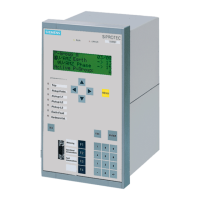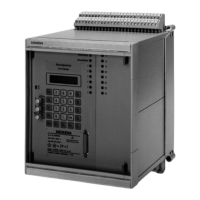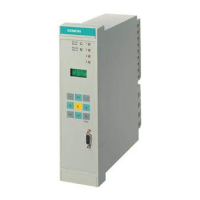Auxiliary Voltage
There are different power supply voltage ranges for the auxiliary voltage (refer to the Ordering Information in
Appendix A Ordering Information and Accessories). The power supplies of the variants for DC 60/110/125 V
and DC 110/125/220 V, AC 115/230 V are largely interchangeable by modifying the position of the jumpers.
The assignment of these jumpers to the nominal voltage ranges and their spatial arrangement on the PCB in
the following sections. Location and ratings of the miniature fuse and the buffer battery are also shown. When
the devices are delivered, these jumpers are set correctly according to the nameplate stickers and need not be
altered. Depending on the modification, additional plug-in jumpers are required. These must be ordered (see
Appendix A Ordering Information and Accessories)
Nominal Currents
The input transformers of the device are set to a nominal current of 1 A or 5 A by means of burden switching.
The jumpers were positioned at the factory according to the specifications on the nameplate sticker. The
assignment of the plug-in jumpers to the nominal current and the spatial arrangement of the jumpers are
described separately for devices 7SJ62 and 7SJ64 in the following sections.
Jumpers X61, X62 and X63 must be set for the same nominal current, i.e. there must be one jumper for each
input transformer, and the common jumper X 60.
With standard 1/5 A transformers, jumper X64 for the ground path is set to 1 A or 5 A irrespective of other
jumper positions and depending on the ordered variant.
With models equipped with a sensitive ground fault current input of setting range 0.001 to 1.500 A there is no
jumper X64.
NOTE
If nominal current ratings are changed by way of exception, then the new ratings must be registered via
the parameters 205 CT SECONDARY /218 Ignd-CT SEC in the Power System Data (see Section
2.1.3.2 Setting Notes).
Control Voltage for Binary Inputs
When the device is delivered from the factory, the binary inputs are set to operate with a voltage that corre-
sponds to the rated DC voltage of the power supply. In general, to optimize the operation of the inputs, the
pickup voltage of the inputs should be set to most closely match the actual control voltage being used.
A jumper position must be changed to adjust the pickup voltage of a binary input. The assignment of the
jumpers to the binary inputs and their spatial arrangement are described in the following sections.
NOTE
If binary inputs are used for trip circuit monitoring, please note that two binary inputs (or one binary input
and one replacement resistor) must be connected in series. The switching threshold must lie significantly
below half the nominal voltage.
Contact Mode for Binary Outputs
Input/output modules can have relays with changeover contacts which can be set as either NO or NC. To do
so, the location of one jumper must be changed. To which relays of which modules this applies, is described in
the following sections.
Exchanging Interfaces
The serial interface can only be replaced in devices designed for panel and cubicle flush mounting. The
following section under margin heading “Rreplacing Interface Modules” describes which interfaces can be
exchanged, and how this is done.
Termination of Bus-capable Interfaces
If the device is equipped with a serial RS485 interface or Profibus, they must be terminated with resistors at
the last device on the bus to ensure reliable data transmission. For this purpose, terminating resistors are
Mounting and Commissioning
3.1 Mounting and Connections
236 SIPROTEC 4, 7SJ61, Manual
C53000-G1140-C210-6, Edition 05.2016
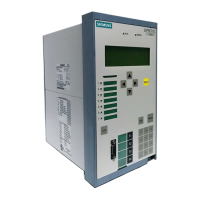
